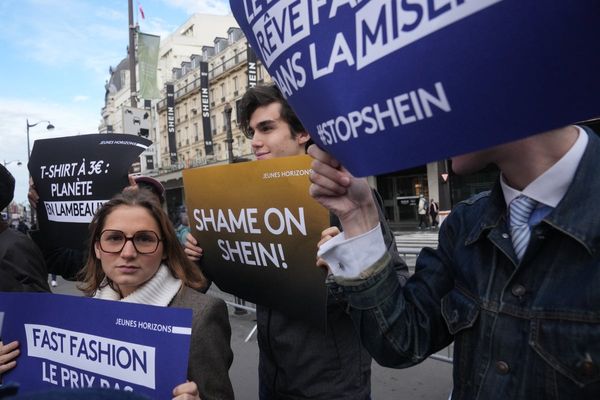
Captain Speedy, sporting an Ethiopian fur cloak, sits for his photograph on the Isle of Wight. It is 1868 and he has just returned from Britain’s punitive “expedition” to Abyssinia. Among his trophies are the lion’s mane shield propped against his chair, and the barefoot boy on his knee. This is Prince Alemayehu, aged seven.
The prince’s father has killed himself rather than submit to the British. His mother has died before the journey to England. Queen Victoria will take this kidnapped child as a godson, send him to public school in a boater, and eventually arrange for him to be buried at Windsor Castle when he dies of pleurisy at the age of 18. Ethiopia has asked for the return of Alemayehu’s remains. All it has received, so far, is a lock of his hair.
What to do with the shield, the fur cloak, the necklace of shells Alemayehu wears in the picture; even the photograph itself? Shove them in the British Museum. For what is this place, if not the greatest repository of “objects” (as they call them) in Britain? Speedy’s wife had all this stuff to deal with at his death in 1910: not just the loot, but the African clothes and his own photographs of Ethiopia. The empire on which the sun never sets has its showcase in the British Museum.
What is so riveting about Hew Locke’s new show what have we here? is that it doesn’t just tell the stock story of imperial theft and carnage. It goes behind the scenes at every turn. Speedy speaks the language, acts as diplomat, takes gravely beautiful pictures; the suicidal king has himself looted his Christian country’s churches. All the objects in the photograph appear in reality, before our very eyes, along with their newly complicated stories. Look twice, and think again: that might be Locke’s motto.
What to call his show at the British Museum: a dialogue, an experience, a shocking revelation? It is all these, and something else. The Guyanese-British artist has spent two years in the vaults, from which he has chosen more than 200 exhibits not just because of how they look, or indeed what they are, but for the strange tales that they carry.
The show opens with Locke talking amiably on screen, surrounded by plastic storage crates and file boxes that spill right out into the gallery. The objects are grouped like small still lifes around specific portraits, such as Alemayehu, in plywood cases. Yellow cards offer stories, ideas and Locke’s own ebullient ruminations. The past is forever in the present.
And looking down from the top of these cases are his curious figures, the largest of them half the size of life: a Greek chorus of observers. A golden conquistador wears a feathered helmet, a shaman peers through fluttering robes, a carnival spectre has a skull mask. One wears a Benin T-shirt, another jeans, a third is in armour, superbly articulated out of cardboard – modern sculptures based on ancient masks, medieval breastplates, limewood carvings – whole traditions of world art, fashioned out of junk. It would be an overstatement to say that you have become an exhibit to these effigies, in turn, but something of that switch is intended.
Locke puts the emphasis on visibility. Here is a portrait of Charles II, the merry monarch, plus the usual evidence that he was a closet Catholic. But alongside is his 1663 charter for the Company of Royal Adventurers of England Trading into Africa. Does his faith really matter more than his involvement in human enslavement? The issue is what’s displayed. “Which history we remember depends on what’s been made visible for you.”
Locke shows beautiful prints of London’s East India Docks in 1802, “like Heathrow and Harwich and Rotterdam all rolled into one”, as he says. One quay was nicknamed “Blood Alley” because the sugar sacks rubbed the skin off workers’ backs. But there are no people in these images: they were devised as soothing propaganda.
Here are shining brass discs pillaged from Benin City by British troops in 1897. Look closer and you see that they are missing sections of rim; look closer still and you see the violent burn marks. Here are trays of glass beads traded for coffee, oil and enslaved people; those exchanged for human beings are oddly faceted, like jewels: as if to make a necklace of people.
Your sight is sharpened. Look at the ventilation holes along the waterline in this cheery painting of an ocean-going vessel and you realise it must be an enslaver’s ship. The white girl in this 19th-century photograph turns out to be an enslaved person (the African American bloodline invisible yet disastrous). Count the innumerable bars rising like a miniature ladder on a Victorian medal and you realise that the British simply didn’t have the cash to keep churning out new medals for all the African conflicts.
The show is copiously stuffed: infinite riches in a single room. And Locke’s own art is comparatively diffident and tactful; a few of his political paintings on colonial share certificates, and his Victorian busts decked in the baubles of empire. Though I wish Locke’s effigies of observers were better lit to reveal his exceptional gift for expressive nuance.
But in the end, as he says at the start, this enterprise is all about dialogue. It is Locke’s power of noticing that matters, and that compels you to notice all the anomalies too – the jug that belonged to Richard II yet somehow ends up in Ghana; the 16th-century African statue of a Portuguese mercenary fighting on their side against Europe; the weird affinity between Alemayehu and the other kidnapped “godsons” of Queen Victoria, between Speedy’s beard and the lion’s mane. More than his figures, it is Locke’s attentiveness that counts, discovering secrets, spotting paradoxes, asking unexpected questions: he is himself the ultimate observer.
Haegue Yang, born in South Korea in 1971, also conjures art out of junk. Christmas trees out of drying racks festooned with lightbulbs; curtains of blue and silver bells that give a sonic frisson as you pass; an exquisite pagoda lantern that sways high above the gallery, formed from venetian blinds.
Old and new are fused. Traditional “sitting tables” are photographed, now overlooked between Coke vending machines and frantic cars in Seoul backstreets. Delicately woven chairs sprout plastic bouquets, or cheap metal turbines that turn them into sputniks. Yang makes minimalist sculptures out of mass-produced sinks.
To stitching, weaving and crochet she brings other delicate skills: a beguiling constellation of stars is printed with pink ink and a lotus root. A starburst is nimbly scissored out of pictures of plastic containers from a hardware catalogue. Her diaphanous tissue-paper collages marry ritual calligraphy with everyday image: the seasons, birds and flowers, faces implied with the smallest incisions, a manicured hand to remind you, perhaps, who toils in our nail bars.
Yang has lived in many countries and made many kinds of work. Leap Year wanders, accordingly, and occasionally loses fascination and focus. But the quietude of Yang’s art has a sonorous finale. A colossal installation of blinds, vertical and horizontal, rises upwards in tiers like a flying pavilion. Light passes through the slats, but also plays over them in shifting spotlights, as if searching for the artist who is the subject of this work, the Korean composer Isang Yun, who spent years in political exile. Yang restages his soaring music in a radical act of everyday poetry.
Star ratings (out of five)
Hew Locke: what have we here? ★★★★
Haegue Yang: Leap Year ★★★
• Hew Locke: what have we here? is at the British Museum, London, until 9 February
• Haegue Yang: Leap Year is at the Hayward Gallery, London, until 5 January







